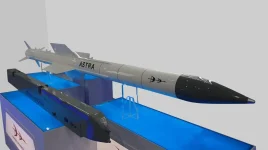- Views: 3K
- Replies: 25
In a decisive strategy to accelerate induction timelines and address the Indian Air Force’s (IAF) dwindling fighter strength, Hindustan Aeronautics Limited (HAL) has formally proposed the commencement of limited-series production for the Tejas Mk2 prior to the aircraft receiving its final operational certification.
This ambitious proposal, revealed by senior industry officials, envisions HAL preparing three dedicated manufacturing lines to support a high-tempo production run immediately following the platform’s transition to series manufacturing.
These lines will be repurposed from the existing Tejas Mk1A facilities, which are expected to become idle post-2033.
The core objective of this expedited plan is to achieve a production rate of 24 aircraft annually starting from the second year of manufacture, currently projected for 2034. This represents a significant departure from the gradual capacity-building approach observed with the Tejas Mk1A program.
HAL’s strategy is designed to ensure the rapid fulfilment of the IAF’s baseline requirement for 120 Mk2 jets, while also accommodating potential follow-on orders that could expand the fleet to 200 aircraft. This ramp-up is critical for the IAF, which currently faces a shortfall of 11 squadrons against its sanctioned strength.
The Tejas Mk2 is envisaged as a 17.5-tonne, 4.5-generation multi-role fighter, representing a substantial technological leap for India’s indigenous defence aviation sector.
Powered by the General Electric F414 engine and equipped with the indigenous Uttam Active Electronically Scanned Array (AESA) radar, the aircraft promises superior performance over its predecessor.
With the first prototype scheduled for rollout in late 2025 and a maiden flight targeted for early 2026, the proposal to initiate pre-certification production underscores the urgency of replacing the IAF’s ageing legacy fleets, such as the Jaguars and Mirage 2000s.
Operational continuity is a cornerstone of this blueprint. The plan relies on a seamless transition from the Tejas Mk1A production run, which is anticipated to conclude by 2033.
HAL currently holds orders for 180 Mk1A jets—comprising the 2021 contract for 83 aircraft and the recently signed 2025 deal for an additional 97 units. Once these deliveries are completed, the three production lines—two situated in Bengaluru and one in Nashik—will be available for immediate conversion.
Industry insiders have confirmed that the transition will be cost-effective and swift. “All three vacant production lines of the Tejas Mk1A will be processed to be prepared for production of the Tejas Mk2,” a source stated.
The retooling requirements are expected to be minimal, as the Mk2 shares significant commonality with the Mk1A in terms of avionics bays and composite assembly jigs, allowing for a faster switch-over.
The Nashik facility, which inaugurated its third production line in October 2025, plays a pivotal role in this ecosystem. Currently adding eight jets per year to HAL’s total Mk1A output of 24 units, this facility will undergo a comprehensive upgrade post-2033.
The repurposed lines will handle final assembly, flight testing, and Maintenance, Repair, and Operations (MRO) for the Mk2. Enhancements will include tooling for specific Mk2 features such as close-coupled canards and heavier weapon pylons. The estimated investment for this transition is between ₹500-700 crore.
Furthermore, HAL intends to integrate private sector partners, including Larsen & Toubro (L&T) and Dynamatic Technologies, to function effectively as a “virtual fourth line,” thereby securing the supply chain against disruptions.
Unlike the Mk1A program, which saw a cautious increase in production rates—from eight jets initially to 24 only by 2026-27 due to external supply chain delays—the Mk2 program is being engineered for speed from the outset.
Sources indicate that the matured industrial base and lessons learned from the Mk1A will allow the Mk2 to hit peak production velocity much earlier. “Tejas Mk2 will be able to achieve 24 unit production from the second year of its production commencement... to fast track orders and deliveries,” officials noted.
At a sustained rate of 24 jets per year, HAL projects it can complete the primary 120-unit order by 2037. This pace also creates capacity to service the IAF’s potential additional requirement for 80 jets, equating to four extra squadrons.
Looking further ahead, HAL maintains an optimistic outlook, suggesting that production could even be surged to 30 units per year if export demands from interested nations materialize, further cementing India’s position as a key player in the global aerospace market.




